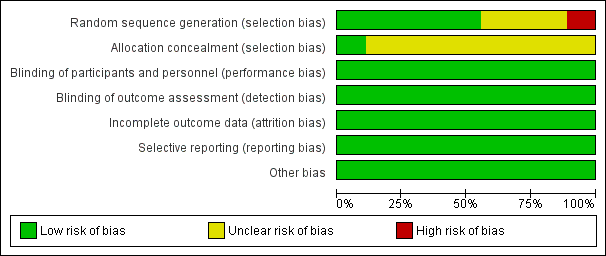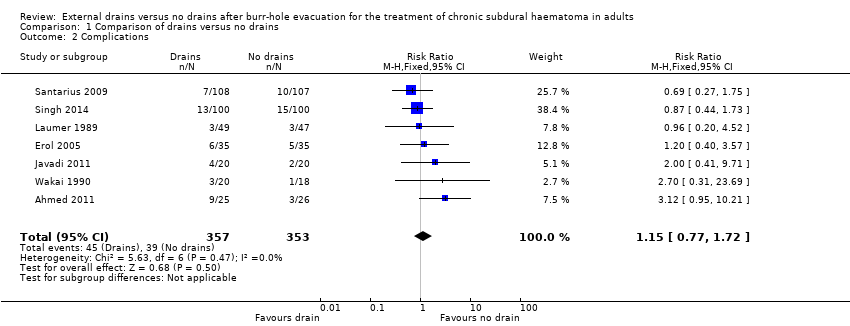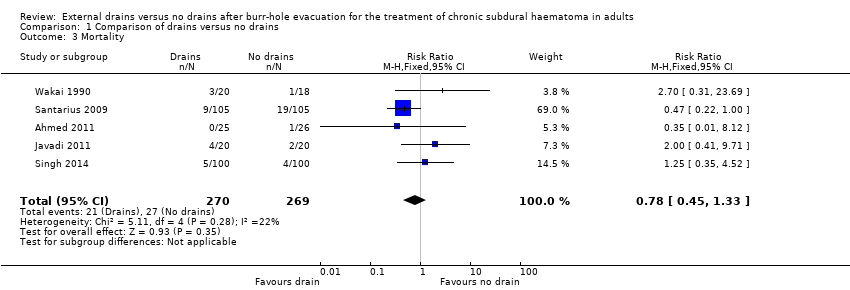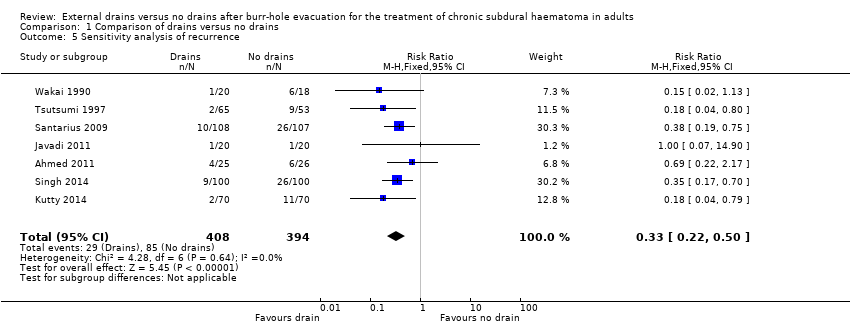Contenido relacionado
Revisiones y protocolos relacionados
Michael H Bennett, Barbara Trytko, Benjamin Jonker | 12 diciembre 2012
Jennifer R Shiu, Erica Wang, Aaron M Tejani, Michael Wasdell | 28 marzo 2013
Anticonvulsivantes para la prevención de las convulsiones en pacientes con hematoma subdural crónico
Bernardo O Ratilal, Lia Pappamikail, João Costa, Cristina Sampaio | 6 junio 2013
Cecilia Wilson, Charlene Willis, Joan K Hendrikz, Robyne Le Brocque, Nicholas Bellamy | 10 noviembre 2010
Amy Aeron‐Thomas, Stephane Hess | 20 abril 2005
Sharon R Lewis, Michael W Pritchard, David JW Evans, Andrew R Butler, Phil Alderson, Andrew F Smith, Ian Roberts | 3 agosto 2018
Jose D Alarcon, Andres M Rubiano, David O Okonkwo, Jairo Alarcón, Maria José Martinez‐Zapata, Gerard Urrútia, Xavier Bonfill Cosp | 28 diciembre 2017
Kumarakrishnan Samraj, Kurinchi Selvan Gurusamy | 17 octubre 2007
Jez Fabes, Susan J Brunskill, Nicola Curry, Carolyn Doree, Simon J Stanworth | 24 diciembre 2018
Juan Sahuquillo, Jane A Dennis | 31 diciembre 2019
Respuestas clínicas Cochrane
Aileen A. Antonio‐Santos | 9 mayo 2018









